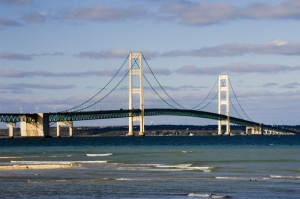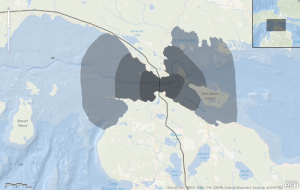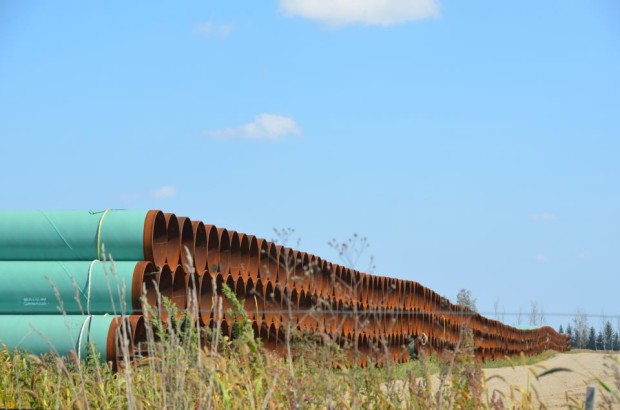We have much more to do and your continued support is needed now more than ever.
Enbridge Threatens Freshwater Drinking Source for Millions of People

“This is a recipe for disaster,” said Andy Buchsbaum, director of the Great Lakes office of the National Wildlife Federation in Ann Arbor. “This toxic oil pipeline is 60 years old, runs beneath the Straits of Mackinac, and is operated by a company with a terrible record of spills and ruptures. Now they want to increase pressure and temperature in the line by pumping an additional 50,000 barrels—2.1 million gallons—per day. This is a BP oil spill scale catastrophe waiting to happen.”
Enbridge Energy has been responsible for more than 800 pipeline spills in the United States and Canada between 1999-2010, including the biggest inland oil spill in U.S. history, in which more than 1 million gallons of oil spilled into the Kalamazoo River.
Despite its shoddy safety record, Enbridge Energy is now trying to expand Line 5. This project is part of a system wide expansion that will have massive impacts throughout the entire Great Lakes region as Enbridge gears up to push incredible amounts of toxic tar sands oil through our waters to refineries that dot the lakes. In addition, that oil is not likely to stay here. Enbridge is also expanding their pipeline network east of Michigan to push tar sands oil to New England and possibly out for export through the Portland-Montreal pipeline.

There is very little known about the integrity of Line 5 because Enbridge, and agencies charged with pipeline oversight, refuse to provide the pubic maintenance records or inspection history. What we do know is that Enbridge’s emergency response plans for this location are abysmal. The overall line is nearly 60 years old and has had its fair share of spills. And there is no margin for error when it comes to preventing oil spills in the Great Lakes: the Lakes provide drinking water for 30 million people in the U.S. and Canada, support a $7 billion fishery, a $16 billion recreational boating economy and are the backbone of one of the world’s largest regional economies.
The report makes the following recommendations to address the sunken hazard of Enbridge’s Line 5:
- PHMSA should deny the proposed 50,000 barrels per day expansion of the Enbridge pumping rate. PHMSA has authority under a federal corrective action agreement to regulate Enbridge activities anywhere along the Lakehead system, which includes Line 5. The higher pressures, and possibly temperatures, in a 60-year old line are too great a risk to the Straits, one of the jewels of Michigan and the Great Lakes.
- Enbridge should be required to install additional response centers on either side of the Straits to speed their response to any spills or ruptures.
- The 60-year old pipeline should be replaced, but only to its current size. Michigan should not have even more oil running through the Great Lakes.
- The federal agency, PHMSA, should declare a moratorium on any new or expanded pipelines that transport a highly toxic form of crude—tar sands derived oil that contains diluted bitumen—until after the National Academy of Sciences completes an ongoing study on this type of crude and new regulations are promulgated.
- Passage of the proposed ballot measure to increase clean energy from utilities, Proposal 3, would reduce the diesel gasoline used to transport coal into the state and promote the type of technological innovation that increases fuel economy in vehicles and decreases the demand for gasoline.
![]()
Take action to stop dangerous tar sands pipelines projects.
If you want to reach out to PHMSA directly and let them know you want to stop Enbridge from being allowed to expand, you can email them: phmsa.hm-approvals@dot.gov or call: 202-366-4535

Enbridge stockpiles pipelines for their expansion to Line 6B of the Lakehead system.





















